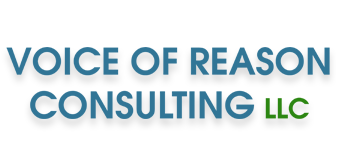
Step 1 – Systematize the business.
Processes need to be recognized, procedures need to be written down in order for the business owner to move beyond his/her own thoughts, his/her two hands, and for outcomes to become predictable. Employees need to be trained, they need to be consulted for their ideas as well, and together the systems that are the lynchpins of growth need to be formulated. I can’t emphasize strongly enough that this effort should start as early as possible in the history of one’s business.
Perhaps, one of the most important tools a business owner needs to master, is understanding that his/her accounting system provides crucial information for managing and growing the business. Accounting systems such as Quickbooks, or free ones such as Xero, Freshbooks, Zoho, and others are relatively easy to grasp and are one of the most effective tools for managing and growing one’s business. The P&L, the Balance Sheet, management of cash flow are too critical to leave to one’s accountant or bookkeeper to manage on an infrequent basis.
An important tool in systematizing one’s business is creating a Dashboard of Key Performance Indicators. You’ve heard the expression that “cash is king”. An example of a relatively simple but very effective Dashboard is one that helps you manage cash flow by integrating it with a Sales Pipeline and a Forecasting Legend to predict the probability of sales and cash available to the business. Using this critical tool, a business owner can choose to look at as often as he/she likes – daily, weekly, monthly, quarterly, to truly understand the health of the business, and whether it is capable of growth at any one point in time. The bottom line is you need to proactively manage your business life. Organizing and systematizing the business will ensure you do that. It really is about working on your business, not just in it!
Step 2 – Be Deterministic.
To make it real simple, I’d like to take the liberty of defining the phrase, “Be Deterministic “, as doing business that is NOT random, but my making the choice to act on a particular sales opportunity, by choosing which types of prospects you want to pitch your products/services to, by choosing to respond or not to RFPs, by choosing whether you want to sell on value or price, volume or quality, or even on a value pricing model where you determine the relationship of your product or services value relative to the price you charge.
Is being deterministic pie in the sky? Don’t we have to take business no matter from where or from whom it comes? I’m a realist – “ya gotta do what ya gotta do”, but as you grow your business it becomes even more important to do what you need to do – make real choices that enhance the growth and well being of your business.
One of the ways to becoming deterministic is to do a SWOT – Examine your business’ strengths, weaknesses, opportunities and threats on a regular basis. The SWOT is a picture of a point in time, and you need to know where your business is at any point in time if you choose for it to succeed.
Understanding the market you want to be in is another way of being deterministic. How big or small is the market you want to be in? How much market share do you need or want to capture? What is your competition like? What do you need to do to be competitive?
What about the actual target prospects/clients in your marketplace? What are they like? What are their must haves, nice to haves? Can you accommodate their requirements? Should you be dealing with a purchasing person who needs the best price or a manager who need to solve a business problem?
And, when do you decide NOT to seize an opportunity? Is it too small, too large, not enough gross margin to be profitable enough, not someone you want to do business with because you don’t trust them?
If you believe you always have the choice, and you are disciplined enough to use the tools you have, and keep looking to your market, and your targets for answers, you can be deterministic, and you will make the real choices to enhance the growth and well being of your business.
Step 3 – Build Business Value.
I would like to focus on building the value of one’s business that is poised for growth. From a high level strategic perspective, I’m going to suggest a business owner consider answering questions such as these:
Do you understand your business at any point in time? Understanding your market, your target audience, your own people, are all important components of the puzzle of increasing value. Have you systematized your business so it will function without you? Are you a great boss? Do you offer excellent company benefits? Do great people want to work in your company? Have you chosen the best possible people to help you manage and grow your business so they will carry the business forward without you? Have you created a business culture that sets your business apart from other companies in your marketplace? Have you created a Board of Advisors or a Board of Directors toad value to your business?
Do you have some intellectual property that will set you apart from your competitors? Should you apply for a patent, a copyright, a trade or service mark? Is it worth investigating any of these items? Will you be able to charge more for your services or products because you have any of these items? Will you be able to sell your business at a higher price if you have any or all of these items in your quiver of arrows?
Are you building your business on transactional sales or on recurring revenues or perhaps both? Are you aware of how your market and investors value businesses such as yours? Are you consistently profitable from year to year? Have you consistently invested in your business – both its systems and its people?
Engaging a Valuation Firm or enlisting the aid of your Accounting Firm is a way to determine business value. First, you have to ask what is the purpose of having a 3rd party value your business. Sometimes, for tax purposes, the goal is not to have the highest business value. On the other hand, if you are selling the business, well, I guess you would want the highest value possible.
Valuations can be determined in several ways including a multiple of revenues, or EBITDA which is essentially net income with interest, taxes, depreciation, and amortization added back to it, and can be used to analyze and compare profitability between companies and industries. Valuations can also be based on the selling price of public companies in an industry sector that matches your business.
One thing I can assure you, it is always a challenge to get the highest valuation for one’s business. But, if you can answer as many of the questions I’ve mentioned in this section, you will have a good shot at getting the value you desire.
My intent in this paper was to present what I think are the 3 steps for achieving sustainable business growth – systematizing, being deterministic and increasing business value. I would never say doing business is easy, but I believe knowing what the steps are for sustainable growth can help ensure success!









